Australia’s 4,000-Year-Old Art: Alien Figures or Tribal Visions?
If you are intrigued by ancient mysteries and legends, you may have heard of the Wandjinas, the supreme gods and creators of land and humanity in Australian Aboriginal mythology. Wandjinas are depicted in some of the oldest and most captivating rock art found in Australia, particularly in the Kimberley region of Western Australia.
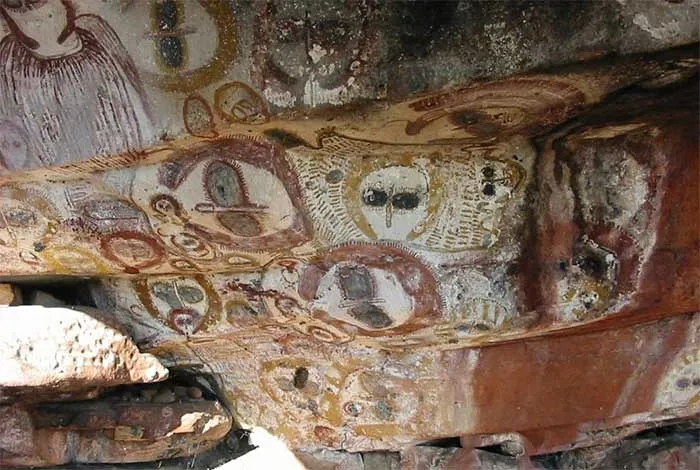
The Wandjinas are also referred to as Gulingi by the Wunambal people of the Mitchell Plateau region. They are believed to be cloud and rain spirits who descended from the Milky Way during the Dreamtime (the Aboriginal creation period) to create Earth and all its inhabitants. They also taught the Aboriginal people laws, customs, rituals, and how to live harmoniously with nature. Wandjinas are associated with water, fertility, and power and are said to punish lawbreakers with floods, lightning, and cyclones.
Australian Aboriginal Rock Art
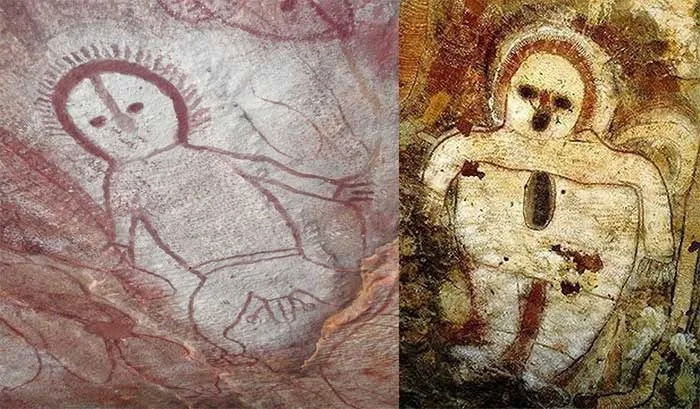
This imagery has been widely circulated on social media and conspiracy websites, with claims that the 5,000-year-old (actually 4,000-year-old) Aboriginal rock paintings depict aliens. But do they?
The Wandjina rock art dates back approximately 4,000 years and was created after a millennium-long drought ended with the arrival of a wetter climate characterized by frequent monsoons. The paintings are found on rocks and in caves across the Kimberley region and are still considered sacred by the Worrorra, Ngarinyin, and Wunambal people, who are the custodians of the land. The paintings are periodically refreshed by Aboriginal artists as a way to renew the Wandjinas’ spiritual energy.
The paintings feature distinct styles and characteristics. They often depict large upper bodies and heads with big black eyes and what appears to be a halo or helmet encircling their heads. The figures lack mouths, which local lore explains in two ways: either the Wandjinas were so powerful they didn’t need to speak, or if they had mouths, the rain would never stop. The paintings also include symbols and objects associated with the Wandjinas, such as the Rainbow Serpent, boomerangs, and stone axes.
Interpretations and Speculations
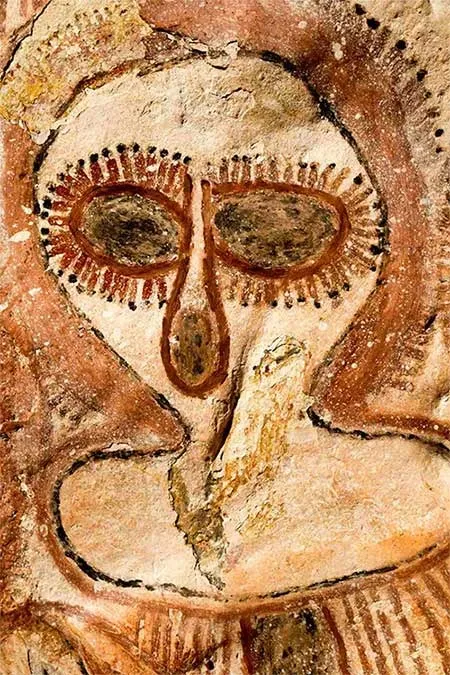
The Wandjina rock art has attracted diverse interpretations and speculations. Some view the figures as stylized representations of humans or animals (such as owls), while others see them as symbols of spiritual power and authority. However, some speculate that the figures might represent extraterrestrial beings.
The white faces, large black eyes, and elongated noses of the Wandjinas have led some to draw parallels with depictions of extraterrestrials. The halo or helmet around their heads has been interpreted by some as evidence of advanced technology or knowledge, suggesting that aliens may have played an active role in creation—a concept echoed not only in Aboriginal Dreamtime stories but also in myths worldwide.
Wandjinas in Aboriginal Creation Stories
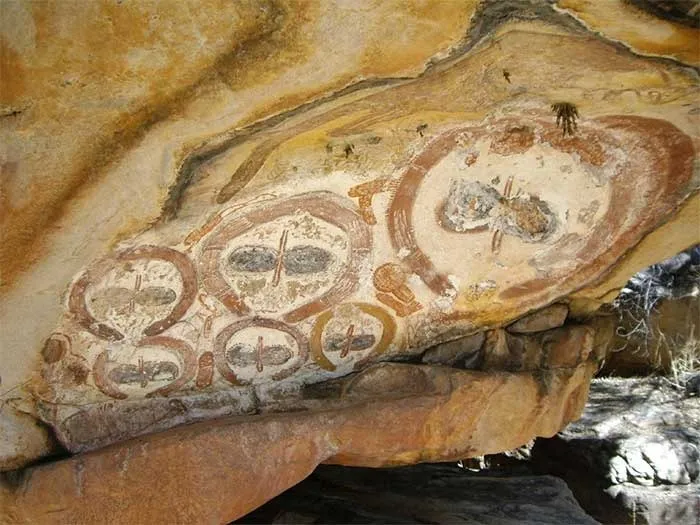
In Aboriginal lore, the Wandjinas are “sky beings” or “spirits of the clouds” who descended from the Milky Way during the Dreamtime to shape the Earth and its inhabitants. Realizing the enormity of their task, they returned home to bring more Wandjinas. Assisted by the Dreamtime serpent, they descended again, spending their time as creators, teachers, and gods to the Aboriginal people they had created.
Eventually, the Wandjinas disappeared, retreating underground and residing beneath water sources linked to each painting. There, they continue to create new “child-seeds,” regarded as the origin of all human life.
Unanswered Questions
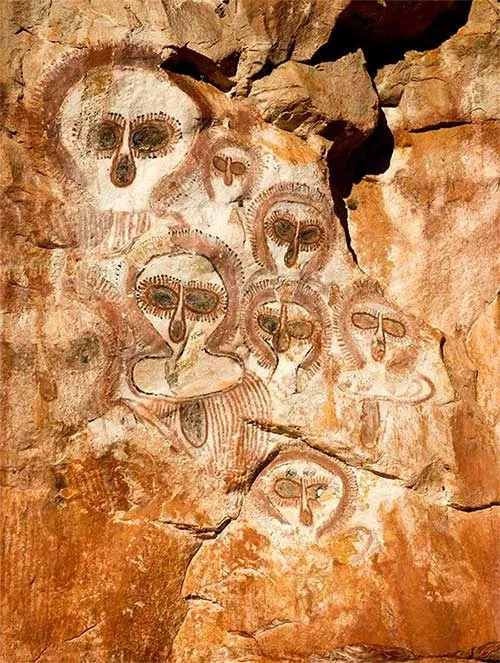
Many questions arise, such as why the Wandjinas are depicted with white skin when the Aboriginal people have darker skin. There is also the disproportionate size of their eyes relative to their faces and noses, as well as the consistent absence of mouths.
While the resemblance between Wandjinas and typical depictions of extraterrestrials in art, movies, and eyewitness accounts is striking, there is no concrete evidence to support the alien hypothesis. Suggesting so might even be disrespectful to the Australian Aboriginal people, who regard Wandjinas as sacred ancestral spirits.
A Testament to Aboriginal Culture
Regardless of the truth, the Wandjina rock art remains a remarkable testament to the rich and complex culture and history of the Aboriginal people. It reflects their profound connection to the land, their ancestors, and their spirituality. These artworks also challenge us to expand our perspectives and question our assumptions about humanity’s past, present, and future.
The Wandjinas, mysterious figures in Australian Aboriginal rock art, feature white faces, black eyes, and halos that intrigue experts. Were they gods, spiritual guardians, or visitors from other worlds? These 4,000-year-old paintings raise questions about the past and their connection to global mythologies. Why do they lack mouths? What meaning lies hidden in their symbols and forms? While some suggest an extraterrestrial origin, Aboriginal people see them as sacred ancestral spirits. What secrets do these enigmatic figures still hold?






